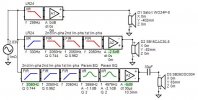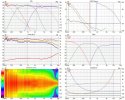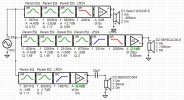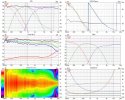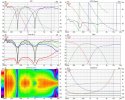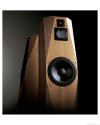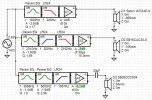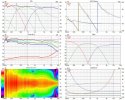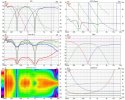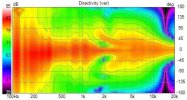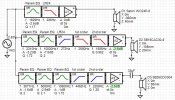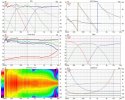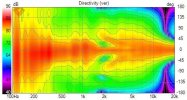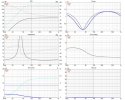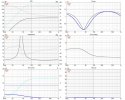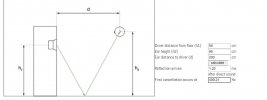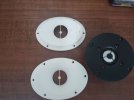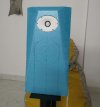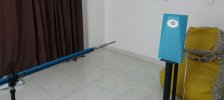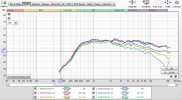Vineethkumar01
Well-Known Member
Hi All,
I wanted to study designing a DSP-based 3 way crossover in VituixCAD.
I have selected the drivers for this project (I have these drivers with me) as
1) Satori WO24P-8 for Woofer
2) SB15CAC30-8 for midrange
3) SB26CDC-C004 as the tweeter
Since this is more of an academic exercise for now, I have generated the crossover configuration based on traced SPLs of these drivers from their datasheets ( know that ideally, we should put the drivers in the cabinet and then take measurements and then design crossover based on it)
The simulations that I have attached along with this post have these drivers placed on a baffle of width 32cm and height 105 cm (with 20mm edge rounding for easing diffraction-related anomalies), currently at locations mentioned in the crossover image.
(Just for more details, the woofer is assumed to be put in sealed box of size 55L, midrange also in a sealed enclosure of about 12 L).
With my limited knowledge, I have tried to design a crossover for this system as shown in attached image. The vituixCAD six pack showing resultant system response details is also attached. I would like to know more details about how should I look at the driver phase matching, can I get better directivity curve for this system, get better on/off axis response etc and in general any advice to better the performance is welcome.
Looking forward to learn more from your valuable opinions.
Thanks
I wanted to study designing a DSP-based 3 way crossover in VituixCAD.
I have selected the drivers for this project (I have these drivers with me) as
1) Satori WO24P-8 for Woofer
2) SB15CAC30-8 for midrange
3) SB26CDC-C004 as the tweeter
Since this is more of an academic exercise for now, I have generated the crossover configuration based on traced SPLs of these drivers from their datasheets ( know that ideally, we should put the drivers in the cabinet and then take measurements and then design crossover based on it)
The simulations that I have attached along with this post have these drivers placed on a baffle of width 32cm and height 105 cm (with 20mm edge rounding for easing diffraction-related anomalies), currently at locations mentioned in the crossover image.
(Just for more details, the woofer is assumed to be put in sealed box of size 55L, midrange also in a sealed enclosure of about 12 L).
With my limited knowledge, I have tried to design a crossover for this system as shown in attached image. The vituixCAD six pack showing resultant system response details is also attached. I would like to know more details about how should I look at the driver phase matching, can I get better directivity curve for this system, get better on/off axis response etc and in general any advice to better the performance is welcome.
Looking forward to learn more from your valuable opinions.
Thanks


